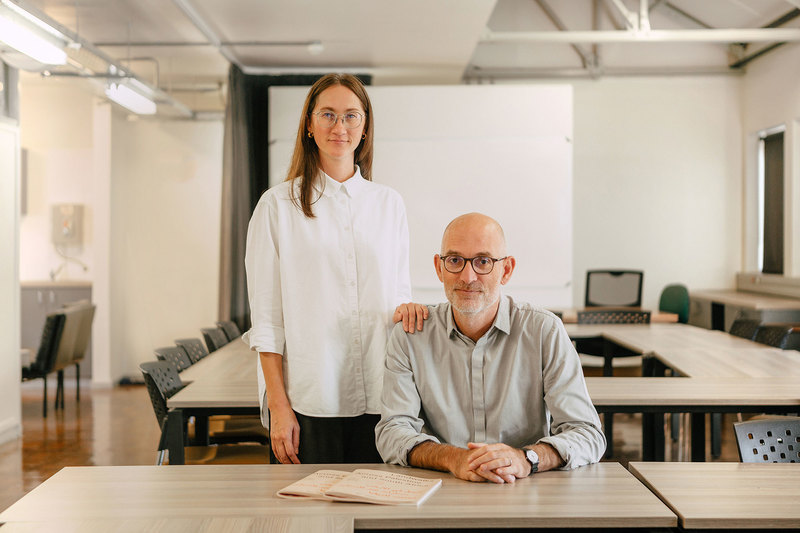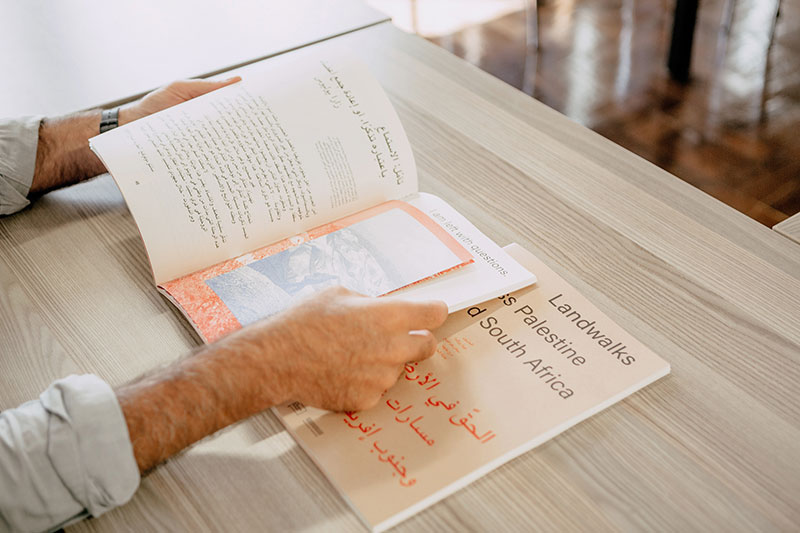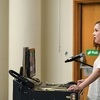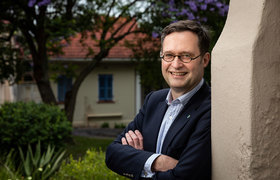Using land to understand human rights violations in Palestine and SA
15 March 2023 | Story Kamva Somdyala. Photos Robyn Walker. Read time 5 min.
The University of Cape Town’s (UCT) Professor Tomà Berlanda, after being awarded funds to work on a creative research project to reflect on the issue of land as a lens to understand human rights violations in South Africa and Palestine, has concluded the work in a 96-page book titled Landwalks: Across Palestine and South Africa.
The book is published in both Arabic and English, and according to Professor Berlanda, the material in the publication demonstrates that partnerships were key in ensuring the success of the book.
Through UCT’s relationship with the Palestinian Museum and the Sharjah Art Foundation’s request “for a project that will contribute to the production of original ideas and critical thinking and will take an experimental and innovative approach to publishing in the broader discourse on art and culture”, Berlanda and collaborators began in 2021.
Kamva Somdyala (KS): What inspired the name of the book?
Tomà Berlanda (TB): The title of the book combines two words: “land” and “walks”. Land is a reflection on how the act of walking allows for an experience of the earth, and points to its role as one of the key lenses through which violations of human rights can be understood.
It also references different kinds of walks, and is partly indebted to Raja Shehadeh’s Palestinian Walks, and to the metaphysical journey the project has been.
KS: Who did you collaborate with to get content for this book?
TB: The essays that are collated in the book brought together a dozen voices of architects, activists, artists in South Africa, Palestine and the diaspora to reflect on the issue of land as a lens to understand human rights violations.
The 96-page book explores embodied ways of knowing land and reclamation of the collective landscape of the two nations by overcoming fragmentary colonial boundaries through artistic practices and research.
The book includes contributions from Hala Barakat, Zara Julius, Samia Kayyali, Tareq Khalaf, Tanzeem Razak, Rasha Saffarini and Tshepo Madlingozi.
The editorial coordination was undertaken by me with Meghan Ho-Tong, Nabil Barham, Marah Khalifa, and Adila Laïdi-Hanieh.
KS: Why was the book necessary to publish?
TB: Since the beginning of the project, violence and oppression, particularly in occupied Palestine, continue unabashed, and indeed worsen. The constant sound has become a difficult element to avoid.
The publication/logbook acts as an echo chamber, amplifying, diffusing, and archiving voices to make sure that they are not lost, and that there is constant hope in resistance to the settler colonial oppression and injustice.
“Different inputs and voices exchanged and enriched the debate.”
KS: Another part of the proposal was to “build knowledge of relevance to both regions, with identifiable potential for positive impact in the occupied Palestinian territories and identifiable academic development outcomes, preferably in both regions”. How did you apply this?
TB: At the core of the proposal was the generation and dissemination of knowledge related to the topography of the occupation in the West Bank that examines similarities, intersections, and peculiarities between the Palestinian experience and the experience of Apartheid South Africa.
KS: What was the work and research you had to put in to get as much information as possible for the book?
TB: The persistence of the pandemic led us to reconceptualise the initial phases of the project and launch an open call inviting contributions from artists and researchers in Palestine, South Africa, and their diasporas in November 2021.
As a result of that, a set of workshops and interactions, and a fascinating series of conversations developed over the course of 10 months. Different inputs and voices exchanged and enriched the debate and made it possible to gather the material that led to the publication.

KS: What should readers expect when reading the book?
TB: In the words of Palestinian Museum director, General Adila Laïdi-Hanieh, PhD, “The publication reflects the effort put forth by both partners to produce emancipatory knowledge experiences.”
It does so in a global political context that suppresses freedom and erodes the rights of oppressed people; this context also directly contributes to raising the ceiling of expectations from cultural and academic institutions, regarding them as having the primary perspective on contemplating issues of justice and the rights of people in experiencing a free and creative life.”
KS: What gave you the most pleasure from working on the book?
TB: In terms of content, I am convinced that our collaborative effort highlights the urgency of piecing together the different voices and letting them be discovered and heard by audiences across borders.
Methodologically, the explicit attempt at allowing different disciplines to intermingle in unfamiliar ways supports our initial suggestion that a creative work would offer an affective experience across violated lands.
 This work is licensed under a Creative Commons Attribution-NoDerivatives 4.0 International License.
This work is licensed under a Creative Commons Attribution-NoDerivatives 4.0 International License.
Please view the republishing articles page for more information.










